We are back to discuss more deadly animals that share this planet with us. In this episode we’ll discuss the deadliest animals, in the largest continent of the world. Let’s dive into this list and see what’s in store for us if we visited the wildlife in Asia.
5.Slow loris
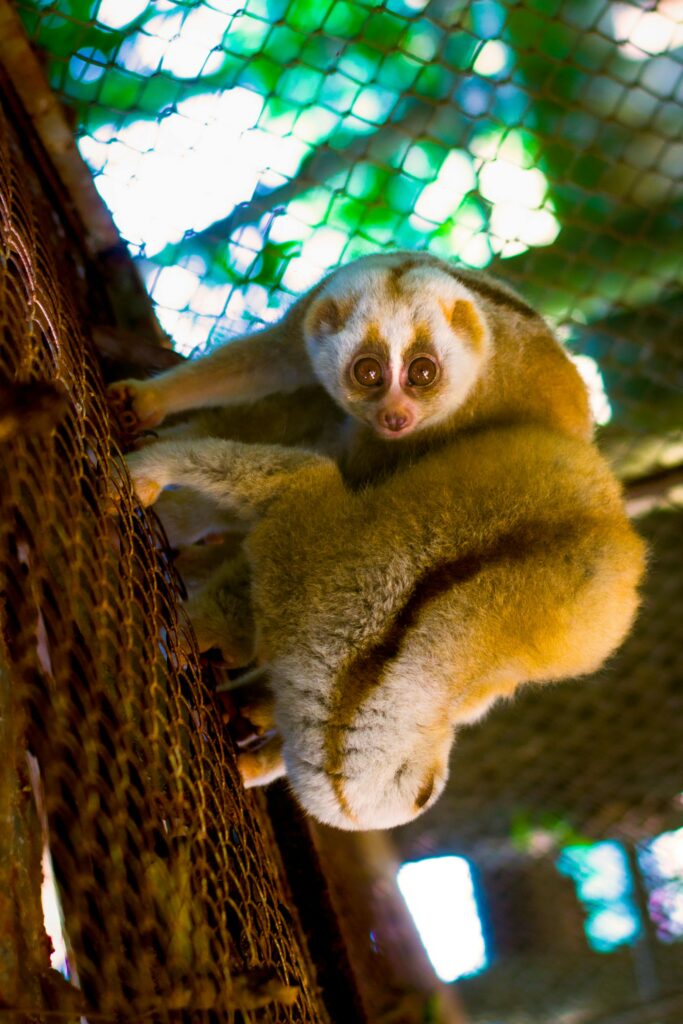
To much surprise, I had to include this cute and furry animal in this list. At first glance it appears to be a cuddly animal, gentle and approachable, perhaps suitable as a house pet. However, making such decision would prove to be fatal. Throughout the different episodes of ‘The Deadly’ series we have primarily associated deadliness with bite force. However, an exception must be made for the slow loris. In this instance, the bite force isn’t the concern but instead something far more concealed, a biological weapon, a defence mechanism that can also be used as an offence…
The slow loris:otherwise scientifically known as Nycticebus, is an omnivore. Its diet can range from plants and arthropods(insects) to small birds and reptiles. You may be thinking ” Okay everything seems to be normal, what’s so special about this animal?” Well here is where you’ll be surprised.
The weapon of choice for the slow loris is the ability for it to secrete poison. It has brachial glands in the armpit region which secrete a venomous oil and to avail itself of such oil the slow loris lifts its arms to grab its head and licks the armpits. No this is not a joke, it’s actually true! The slow loris having secreted this poisonous oil, licks it. Doing so the oil now binds to the saliva of the slow loris. This is how a slow loris is classified as a venomous mammal.
It is believed by scientists that the slow loris uses this venom to fend off against predators and other slow loris for competition and mating. Paradoxically, a small animal like a slow loris can actually cause disastrous inuries due to its venom. The venom is capable of causing paralysis, anaphylactic shock, necrosis(death of tissues) or ultimately, death if untreated.
Overall, this cute little stress toy packs a punch, a punch capable of first round knockout. Lethality 7/10, deadly because of its venom but can be left undisturbed.
4.Komodo Dragon
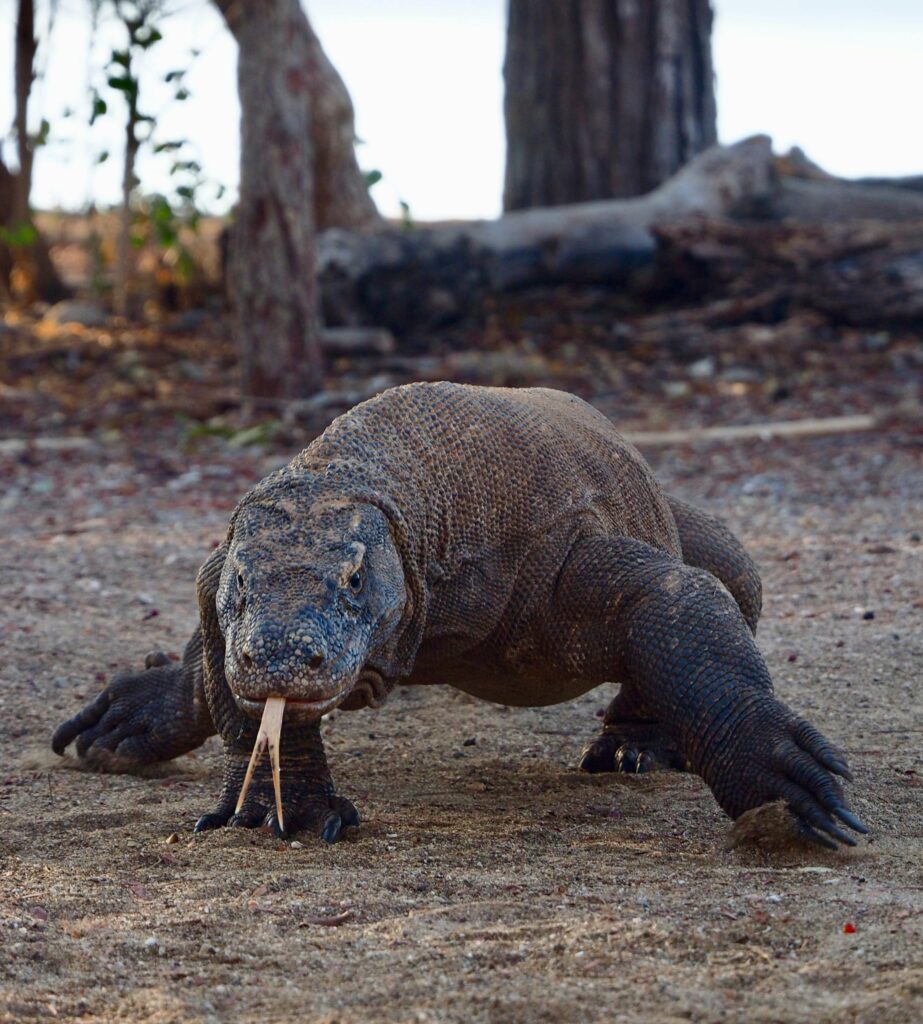
The animal shown in the above image is a complete contrast to the one we just previously discussed. There’s no need for it to be said, it is unfathomable to even imagine, having this animal as a pet. What we are seeing here is a Komodo dragon or, as the fancy white lab-coat guys like to call it Varanus komodoensis.
The Komodo dragon is the largest lizard on Earth with the ability to reach up to 3m long and weigh over 135kg. They are really just a walking war machine. A bit like video games, Komodo dragons represent the final boss of the lizard species. They are large but also host other specific traits and characteristics. For starters,they are venomous.Within their lower jaw they have venom glands which secrete the toxins once the Komodo bites onto its prey. The venom is found to have: anticoagulants(prevent blood clots);neurotoxins(causing paralysis or weakening of muscles);Hypotensive agents(reduce blood pressure and cause shock). All of these just to list a few. Just to note though,the venom doesn’t eliminate the prey immediately and it requires some time to actually see effectiveness. For instance, a water buffalo might get bitten but succumb after hours or even days after the incident. Komodo dragons are well equipped for this. They have forked tongues which can help detect prey by essentially ‘tasting the air’. With a range of up to 4km, their persistence poses a real threat to their prey.
By now you must be thinking: ‘surely that’s enough overpowered perks for a singular animal to have’. You would be soooo wrong. Their violent tendencies and killer instincts are demonstrated simply through their diet. If hunting prey of different species wasn’t enough, they also hunt other komodo dragons. Turning their habitat into a literal battle royale. What’s even more shocking they are capable of running up to 200km/h… JOKING, just joking. (Really hoping you didn’t alt+f4 your computer because of this.) They are able to run upt to 20km/h which is the running pace for an average person. Better get running and getting faster or else you might struggle against a komodo.
Overall, Lethality is 7.5/10. Try to outrun it, preferably in zig-zags and try to avoid them in general.
3. Jaguar
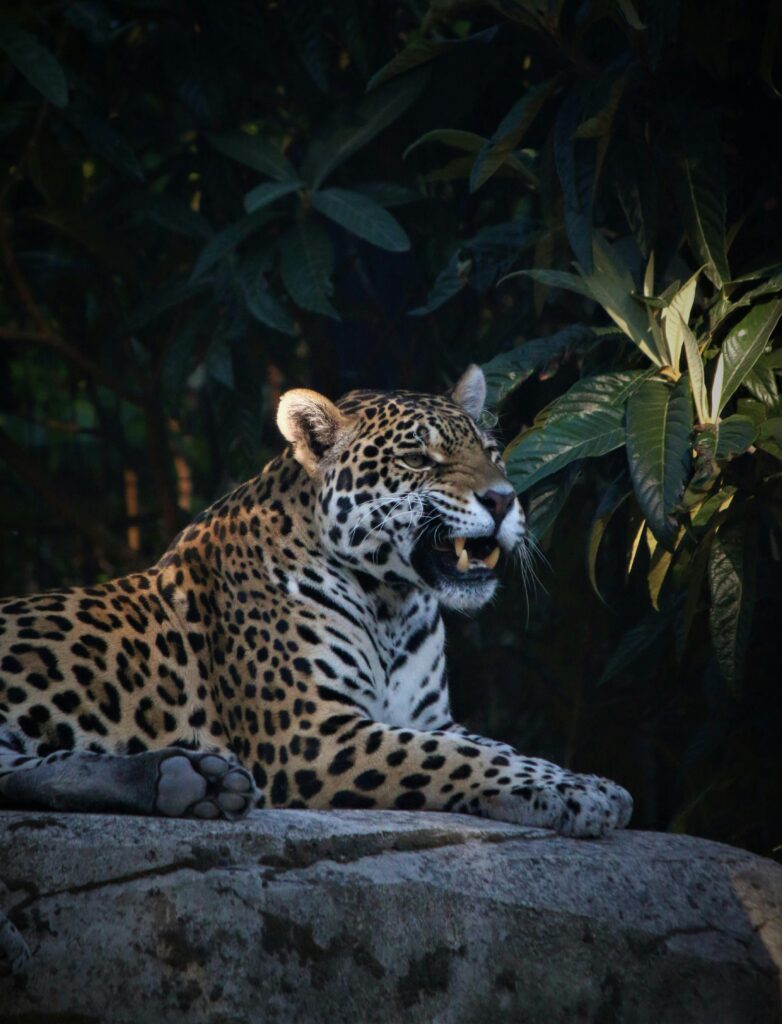
In this tier list, I decided to place the jaguar in third place. The nomenclature assigned to this formidable predator is Panthera onca. Whilst some of you may recognise a jaguar instantly due to its distinct features, some people haven’t developed that eye for detail. People commonly mistake jaguars for leopards, even though they are very distinct. For example, jaguars have larger rosettes than leopards:with the added difference, of having black dots in each rosette.
Justifiably, you’re thinking: ‘How does this make it deadly?’ Well, it doesn’t but we’ll get to the other deadly traits now. First of all, in comparison to leopards,jaguars are heavier and bigger with an average weight of 45-114kg: leopards averaging at 23-68kg. Heavier, thus harder to man-handle. What’s more, the jaguar is part of the big cat family and just like its tiger cousin it too enjoys swimming and is capable of hunting in rivers. It is such a great swimmer that caimans are included in their menu. What I am trying to express here is that swimming away isn’t an option.
Now let’s cut to the chase here. The jaguar is not an animal to be trifled with. According to statistical findings, the bite force of a jaguar is the strongest of the big cat family when assessing the bite force to body size ratio. Remember that the big cat family consists of tigers and lions which are much larger than the jaguar. Most felines kill their prey by reaching for their neck:containing vast amount of carotid arteries and thus large blood supply flow. By biting the neck they can subdue the prey as it would die of loss of blood or broken neck vertebrae. However, jaguars are anti-conformist. They are capable of crushing the skulls of their prey causing an instantaneous death. With a bite force of approximately 1500 psi, if a prey finds itself in the jaws of this animal, there is no escape for it.
Overall, they are: agile and great climbers;ambush predators;capable of crushing bones with one bite and basically submarines. Lethality 8.5/10.
Hope that the jaguar isn’t interested in you or teleport away.
2.King cobra
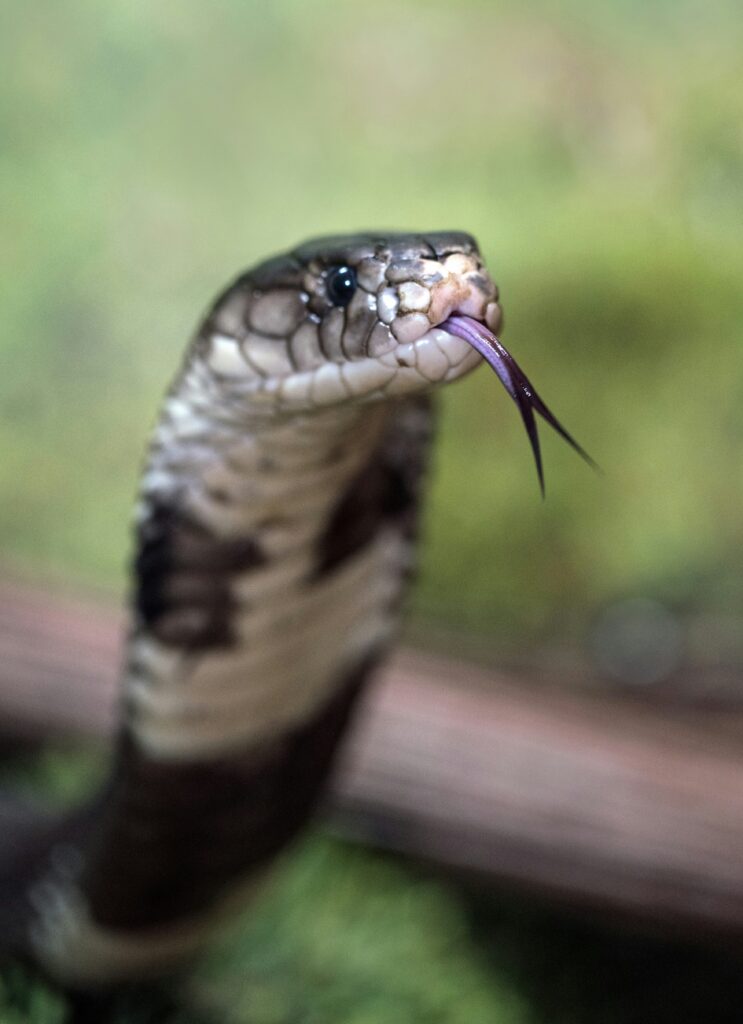
This is the animal that comes out when its trainer starts playing the flute. Do not be deceived though, they aren’t meant to be kept as pets nor do they possess features that would suggest that they are friendly around humans. The nomenclature for the king cobra is Ophiophagus hannah. They have the genus ‘Ophiophagus’, if you’re an expert of snakes this, in fact should start to ring warning bells for you.This is because in Greek, ‘Ophiophagus’ means ‘snake-eater’. On the other hand, other cobras share the genus of Naja.
Apart from its cannibalism, they are capable of swimming rendering them a threat even in water. Making escaping them that much more difficult. However, it is fair to say that we know that snakes aren’t known for their bite forces, but instead their venom. So let’s explore more.
Firstly, the venom in a king cobra contains many toxins which are capable of causing disastrous effects to the unfortunate. The toxins include: Procoagulants and anticoagulants causing insufficient or excessive clotting damaging internal organs; neurotoxins that shut down nervous system; cardio toxins causing shut down of the heart; just to list a few. What’s more, hatchlings of king cobra are already equipped with venom and do not have to develop it rendering them deadly from day 1. In addition to this, studies show that venom of king cobras isn’t the strongest compared to other cobras in the Naja genus. However, king cobras are able to control their venom injection and thus are also capable of injecting up to 7000mg of venom compared to an indian cobra only capable of injecting 150-300 mg of venom.
Having evaluated the deadliness of this animal I rate it a 9.0/10, in lethality. If left untreated an individual could die in a span of 60 minutes!
1. Tigers
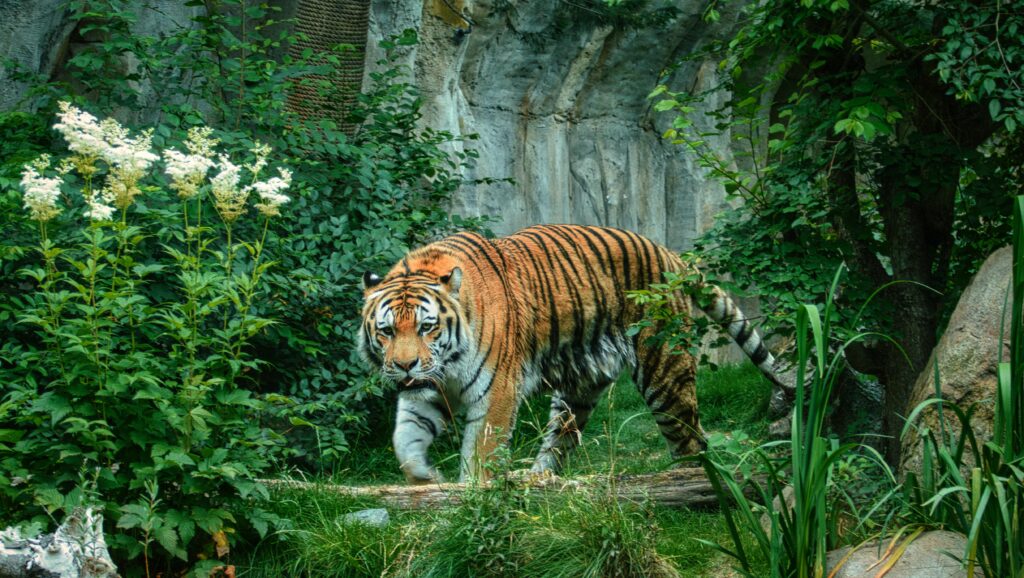
The tiger has managed to place itself in first position in this deadly tierlist. The general nomenclature of tigers is Panthera tigris.
We’ll briefly discuss about the Siberian tiger. Its specific subspecies nomenclature is Panthera tigris altaica. Out of all the tigers in the world the Siberian tiger towers over the other subspecies of tigers due to its notable size difference. For example, the Bengal tiger is the second largest tiger right after the Siberian tiger. To support this, data shows that the average weight of a male bengal tiger can range from 180-260kg, whilst, Siberian tigers range from 185-300kg. In general, Siberian tigers are bigger and stronger than Bengal tigers due to their harsh environment requiring them to be so. These colossal tigers are mainly situated in Russia and north-land China. Without their adaptation in terms of size and fat: the harsh climate would make quick work of their population.
In general, the tiger has a few tricks up its sleeve: or should I say paws, that make it a nightmare for its unwary prey if it was have an encounter with it. Tigers can be deadly even without them biting. Unfortunately, with the combination of: tigers being capable of standing on their hind legs; having sharp claws that can reach up to 10cm long, a small mammal would have little chance of surviving a swipe attack from a tiger. To reinforce this, is the fact that a single swipe of from a tiger is capable of breaking bones or in some cases direct decapitation of its prey.
Moreover, what makes tigers such terrors of the land is their other traits. Shockingly, according to scientists, a tiger’s roar is capable of causing temporary paralysis of its prey. It is believed it occurs due to its low pitched roar at 18hz which enters in the infrasound range. This range of sound is capable of applying a brief stun effect to the prey: allowing it to gain the advantage in chases. With a combination of 18hz pitch and 114 decibels roar(being extremely loud) it serves as a ‘jumpscare’ to its prey to slow them and disorient them.
To conclude as to why the tiger deserves to be at the top of this tierlist, the bite force must be considered. Having discussed all these traits you’d think that its bite force would be much lower to compensate and not be overpowered. Funnily, the tigers bite force is at approximately 1000psi. This making it an absolute apex predator within its kingdom.
I rate the lethality to be a 10/10. If it has its eyes locked onto you for food, there’s a very slim chance of survival. With their short burst reaching speeds of up to 65km/h and having all the traits we have discussed. It is a force to be reckoned with.
Ending
I hope you enjoyed this post, let me know if you agree with this tierlist, what you would add and what you want me to cover next. For any requests make sure to check out our contact page and leave a message. Bear out.
